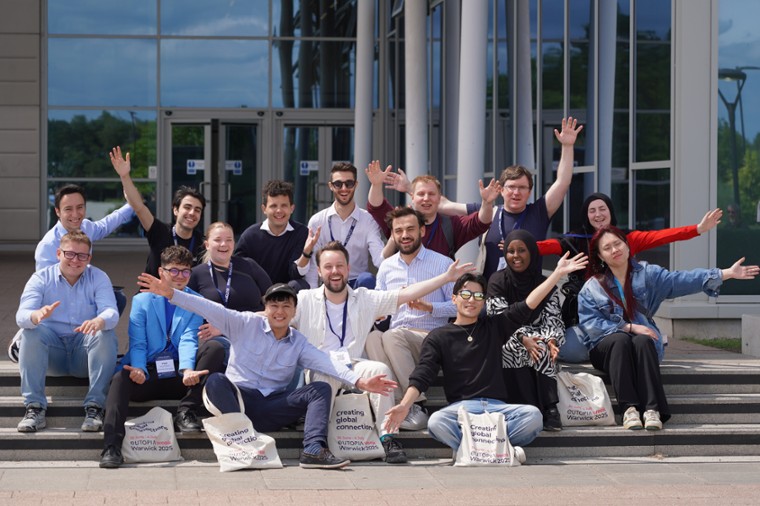On October 25, the
EUTOPIA_HEALTH project hosted its inaugural Science Cafe in Cluj-Napoca, Romania, fostering community engagement and raising awareness about a frequently neglected public health issue: radon exposure. At Babeș-Bolyai University, this event brought together researchers from the Faculty of Biology and Geology and the Faculty of Environmental Science and Engineering, who delivered an enlightening session titled “The Traps in the Air We Breathe: Radon.”
The researchers, actively engaged in advanced work on radon detection, guided the audience through the complexities of this insidious gas. Radon, a naturally occurring radioactive element, is known to accumulate in confined spaces such as homes and offices, often going unnoticed. Prolonged radon exposure can pose significant health risks, with lung cancer being a primary concern associated with elevated levels. The researchers emphasised radon’s stealthy nature, highlighting how it can accumulate to hazardous concentrations without detection.
A key highlight of the evening was the unveiling of the Radon Map of Romania, which visually represented radon concentrations across various regions. This map allowed participants to comprehend the local and national impact of radon, providing context regarding the dangers in their own environments. Following this, an engaging demonstration offered a practical approach to radon detection, showcasing simple, cost-effective tools for measuring radon levels in indoor spaces.
Dr. Kinga Hening, representing the Radon Test Laboratory (LiRaCC), delivered an informative presentation on the processes involved in radon screening and measuring, including potential mitigation strategies. Her insights underscored the significance of regular monitoring, particularly in regions known for higher radon levels, and outlined actions that homeowners and businesses can take to decrease radon exposure.
Additionally, Assistant Professor Valentin-Florian Rauca from the Department of Molecular Biology and Biotechnology thoroughly examined the relationship between radon exposure and lung cancer. His research illustrated how radon particles, when inhaled, can settle in the respiratory tract, potentially resulting in cellular mutations and, ultimately, cancer. Rauca’s presentation detailed the molecular interactions underlying radon-related health risks, stressing the critical need for early detection.
A dynamic Q&A session concluded the evening, allowing attendees to explore their concerns and curiosities. Participants posed questions on topics ranging from local radon levels to the broader health implications of radon exposure, reflecting the community’s genuine interest in understanding and addressing this health hazard.
As Romania continues to map and monitor radon levels, initiatives like this Science Cafe empower individuals with knowledge, resources, and solutions to protect their health and wellbeing.

